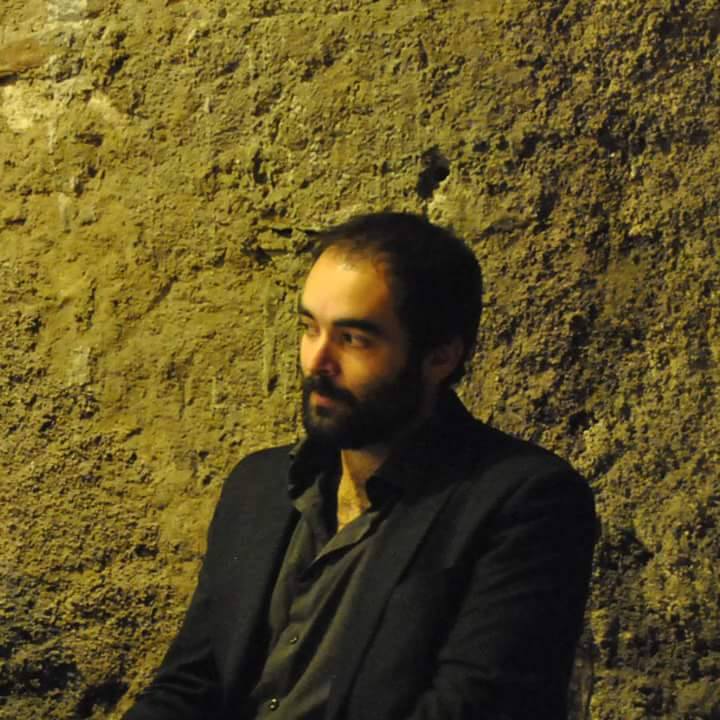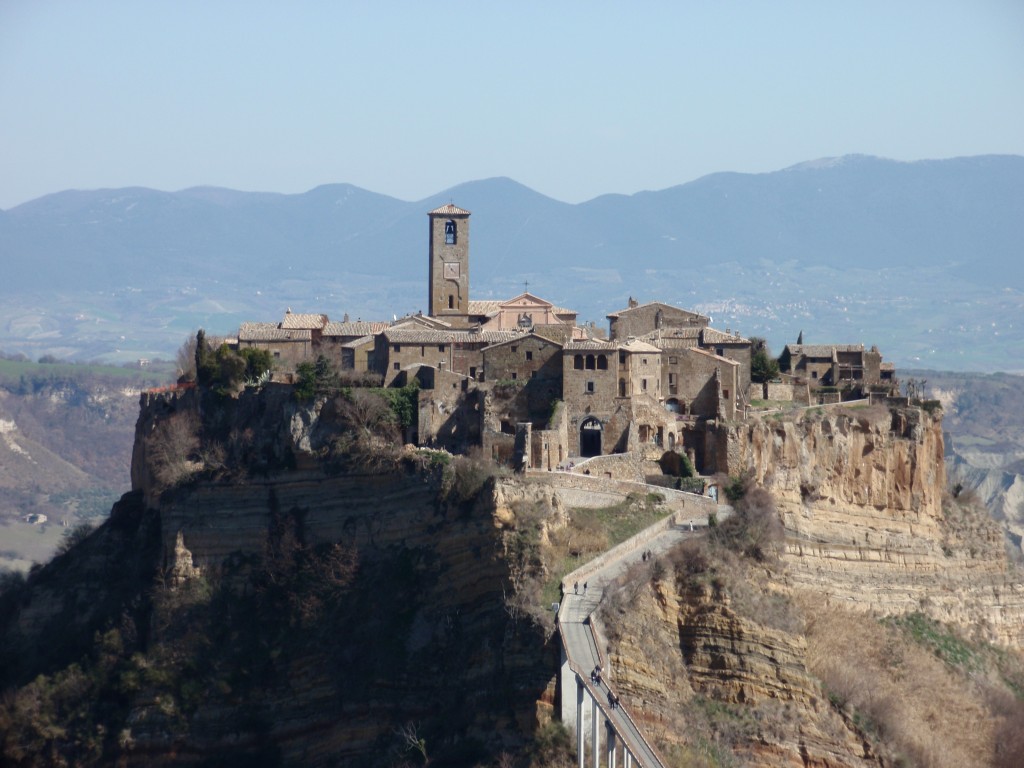MA CHE CITTA’?
RESILIENZA VS RESISTENZA
Dialogo con Emmanuele Pilia, critico di Architettura,
su passato presente e futuro della città.

S.D.G. Cerchiamo per prima cosa di inquadrare il soggetto della discussione, di metterlo a fuoco. Parleremo della città: aggregato urbano, insieme di persone.. fenomeno. La città per l’architetto, e per il critico di Architettura. Che cos’è per te Emmanuele?
E.P. Cominci con una domanda banale, ma solo all’apparenza; è come chiedere a un matematico cos’è un numero. Potrei risponderti che la città è là dove i flussi si raggrumano, ma prima di discutere di questo ritengo utile definirla un caso storico. Come sappiamo, essa nasce per motivi militari -soprattutto difensivi- come spazio intra moenia, dove ricevere protezione e concentrare le forze.
S.D.G. Interessante notare, nel Rinascimento, come la comparsa dell’artiglieria sul campo di battaglia abbia avuto come conseguenza la costruzione di possenti mura dalla pianta stellata che condizionarono pesantemente la forma della città stessa.
E.P. In un breve periodo però l’artiglieria moderna rese inutili le mura. Nel XIX secolo, epoca della Rivoluzione industriale, le mura vengono smantellate e la città assume una nuova ragione d’esistere come mercato. Oggi la situazione è ancora diversa e dobbiamo adottare altri criteri di giudizio.
S.D.G. Un cambiamento di epoca.
E.P. È facile riscontrare che nell’800 l’eclettismo ha assunto una grande importanza quale stile architettonico. Ai nostri giorni, molti architetti e urbanisti affrontano il tema del linguaggio impostandolo come un problema di mode, un insieme strutturato di modi di agire e pensare che in qualche modo facilitano le scelte ma le banalizzano. Quando persino il problema della sostenibilità diviene moda, allora non mi stupisco se a ciascuno sembra lecito seguirne una propria e personale. Un caso emblematico è stato il concorso per il nuovo museo di Helsinki, per il quale sono stati presentati moltissimi progetti con una incredibile varietà di linguaggi diversi in lotta per la vittoria. In pratica, ne facciamo ancora un problema di ordini architettonici.
S.D.G. Siamo quindi d’accordo che l’architetto dovrebbe ragionare in termini più seri e impegnati, e approfondire tematiche inedite. Su quali dinamiche contemporanee ti stai concentrando in particolare?
E.P. Per esempio, gli ambiti geopolitici. Conoscerai per certo il muro che separa Palestina e Israele, o quello tra Messico e Stati Uniti; ma non dobbiamo guardare tanto lontano, un muro simile c’è anche a Padova e separa gli immigrati dalla “gente comune”.
S.D.G. Nel recente libro che hai scritto con Alessandro Melis, “Lezioni dalla fine del mondo”, lasci intendere che le nostre città non riescono a rispondere ai loro problemi più attuali, e il muro di Padova ne è l’esempio, quasi una metastasi urbana. Certo, la colpa come dicevamo è anche del nostro modo di pensare. Che cosa blocca l’evoluzione delle nostre città? Mi sembra di capire che la caratteristica principale dei nostri aggregati urbani sia la resistenza, che è il contrario della resilienza che invochi.

Tokyo Metabolizing*
E.P. Proprio così, ma attenzione: resistenza delle cose, ma anche delle persone, non-adattabilità. Persino il corpus legislaivo, in Italia, è scarsamente capace di evolversi e perfezionarsi in tempi brevi, complicando spesso la situazione, divenendo obsoleto in poco tempo. Deve anche essere chiaro che non si tratta solo di scarsa capacità del legislatore: al contrario, a volte la legge è istituita ad uso e consumo di chi, a conti fatti, ne trae guadagno, e quindi non ha interesse al cambiamento. In questo senso, le nostre leggi funzionano benissimo!
S.D.G. Dovremmo quindi abolire ogni regolamento edilizio? È una tentazione. Anche l’abusivismo, come ogni cosa, può avere dei pregi. Se ogni regola può assumere un valore positivo o negativo in maniera relativa, potremmo affidarci al solo buon senso.
E.P. No, lo escluderei. L’urbanistica non tollera l’anarchia, e molte leggi tutelano realmente la salute pubblica dalla speculazione come dalla stupidità. Però questo non toglie che le nostre leggi producono immobilismo, e lo fanno in parte volutamente. È anche un gioco perverso che consiste nel creare una sfera di protezione, ma prevedendo anche il modo per eludere il controllo. Un piacere quasi erotico.
S.D.G. Mi ricordi il progetto My Masochism, che entrambi abbiamo seguito per Cityvision. Forse grazie a quel progetto, per la prima volta, abbiamo cominciato davvero a renderci conto di quanto il meccanismo del sadomasochismo sia rilevante nel campo dell’Architettura e dell’urbanistica.
E.P. Un piacere che potrei definire voyeuristico parlando di legislazione. Lo immagino anche come piacere all’autopreservazione.
S.D.G. Riguardo agli interventi decisi a-priori, ricordo che in “Lezioni..” si discute, per esempio, delle abitazioni collettive e mi ha molto colpito la vicenda di Pruitt-Igoe e del suo fallimento. Cosa ti è rimasto più impresso di quell’episodio?
E.P. Quanto poco esso abbia insegnato, specie all’urbanista europeo. Pruitt_Igoe era un aggregato urbano per neri, costruito per eliminare le bidonville del dopoguerra e demolito proprio mentre in Italia si costruiva Corviale. Un periodo della storia americana in cui la legge perseguiva la segregazione razziale e quindi urbana.
S.D.G. Ecco un caso di intervento che ha fini non condivisibili: segregazione, contenimento, e ancora, abbiamo parlato di motivi economici, commerciali. Che cosa dovremmo pensare di chi ha questi obbiettivi, così lontani dalla resilienza che auspichiamo invece per il futuro della città?
E.P. Non formulerò un giudizio, ma ricordiamoci del fatto che queste persone sono come me e te, e i loro scopi sono gli effetti della natura umana più profonda; dobbiamo stare attenti quando tutto ciò viene a galla.
S.D.G. A questo punto, mi preme davvero una domanda: la città deve evolvere e farlo in fretta, perché altrimenti rischia il collasso di fronte alle sfide della nostra epoca?
E.P. Ne sono fermamente convinto!
S.D.G. Allora si pone un’altra domanda: cosa tuteleremo del passato, escludendolo da questo processo evolutivo?
E.P. Non risponderò stavolta, perché penso che porsi questo problema significhi scadere inevitabilmente nel meccanismo della nostalgia. Ciò è inevitabile e credo che occorra essere coraggiosi per immaginare il futuro.
S.D.G. In “Lezioni..” con Alessandro Melis parlavate del progetto Zombiecity, una città immaginata come comunità chiusa in perenne emergenza, creata per fronteggiare un’invasione globale di zombie. Un pretesto per parlare di resilienza allo stato puro?
E.P. Si, anche davanti a situazioni estreme o impensabili. Per capire come sciogliere il nodo della resistenza, sociale e materiale: Genova, Rosarno.. quelle tragedie derivano da questo problema che non è affatto astratto, anzi contiamo già le vittime di questi atteggiamenti malsani.
S.D.G. Avremo presto altre pubblicazioni su questo tema?
E.P. Posso anticiparti qualche novità: pubblicheremo il nuovo libro di Léopold Lambert, “Topie Impitoyable”, “Luoghi terribili”, sul rapporto perverso tra città politica e corpi.. nonchè un nuovo libro su Zombiecity, con riflessioni ancora più approfondite. Saranno due libri molto “puri e crudi”. Vogliamo essere incisivi!
S.D.G. E credo sia davvero il momento di esserlo, grazie Emmanuele.
Sebastian Di Guardo

Civita Di Bagnoregio. Photo Di Guardo
*Tokyo Metabolizing, a concept movie produced for the Japanese Pavilion at the 12th Venice Biennale, held between 29 August and 21 November, 2010 in Venice, Italy. The work had been offered to WOW by architect Ko Kitayama, the commissioner of the Japanese Pavilion, and is based on the Pavilion’s concept “Tokyo Metabolizing,” which is expressive of the unique way in which the city of Tokyo has expanded. Aerial photographs of Tokyo were incorporated, and rendered to appear as a fix-point observation footage taken over a long period time. The work captures houses and buildings appearing and disappear- ing one after another, representing the city of Tokyo as a living metabolizing organism.
But what city?
Resilience VS Resistance
Dialogue with Emmanuele Pilia, architecture critic talking about the past, present and future of the city
Let’s firstly try to focus on the matter of the conversation. We are going to talk about the city: urban aggregate, an ensemble of people…a phenomenon. The city for the architect and for the architecture critic. What is for you Emmanuele?
You are starting with a trivial question but only in appearance; it is like asking a mathematician what a number is. I may answer you that the city is the place where the flows are clotted. But before talking about this, I consider it an historic case. As we know, it born for military reasons, especially for defensive ones, such as intra moenia space where protection and concentrated forces can be received.
It is interestin
For a short period of time, however, modern artillery made the walls useless. In the 19th century, Age of the Industrial Revolution, the walls were dismantled and the city assumed a new reason of existing as a market. Nowadays, the situation is more different and we should adopt other judgement criteria.
A change of Age.
It is easy to find out that in 800 eclecticism assumed a great importance regarding the architectonic style. In our times, many architects and city planners deal with the topic of language setting it up as a popular problem, a structured ensemble of ways of reacting and thinking that in some way of another these ways facilitate the choices but still trivialize them. When even the problem of sustainability becomes popular then I am not surprised at all if everyone seems allowed to follow their own and individual one. An emblematic case was the competition for the new museum of Helsinki for which many projects with an incredible variety of different languages had been carried out in the battle for victory. Practically, we still have a problem from an architectonic view.
So, we agree that the architect should think in a more serious and engaged way and plunge more into inedited themes. On which dynamic contemporary themes do you especially concentrate?
For instance, on geopolitical environments. You certainly know the wall that separates Palestine from Israel, or the one from Mexico to USA; but we must not look far away, a similar wall is to be found also in Padova and it separates the immigrants from the common people.
In your latest book which you have written with Alessandro Melis, “Lezioni dalla fine del mondo”, you make us understand that our cities are not able to answer to their most actual problems, and the wall of Padova is an example, it is almost a metastasi urbana. Obviously, it is also, as we have said, the fault of our way of thinking. What does block the evolution of our cities? I seem to understand that the main characteristic of our aggregated urban is the resistance, which is the contrary of the resilience that you mention.
It is indeed like that, but be careful: resistance of the things, but also of the people, non-adaptability. Even the legislative corpus, in Italy, is slightly able to evolve and improve itself in a short period of time by often complicating the situation and becoming obsolete immediately. It must be also clear that it is not only about the poor ability of the legislator: on the contrary, sometimes the law is established for the usage and consume of those who, with their methods, draw gain and therefore they are not interested in changes. In this way, our laws function very well!
Should we therefore abolish any building rule? It is a temptation. Also the abusiveness, like any other thing, might have a quality. If any rule can assume a positive or negative value in a relative manner, we may trust our own good sense.
No, I would exclude it. The city planning does not tolerate anarchy and many laws actually defend the public sanity from the speculation such as stupidity. But this does not eliminate the thing that our laws produce immobility and they make it deliberately. It is also a pervert game which consist of creating a sphere of protection but preventing also the way to dodge the control. An almost erotic pleasure.
You remind me of My Masochism project which both of us have followed for City Vision. Perhaps thanks to that project, for the first time, we seriously start to comprehend how the sadomasochism mechanism is relevant in the architecture and urban field.
It is a pleasure that I may define it voyeuristic when talking about legislation. I imagine it also as a pleasure for self-preservation.
Regarding the decided measures, I remember that in “Lezioni…” we talk about, for example, collective houses and the story of Pruitt-Igoe and his failure really shocked me. What remained mostly imprinted for you from that episode?
How little did he teach, mostly European city-planner. Pruitt Igoe was an urban aggregate for black people and constructed to eliminate shantytowns after the war and then demolished while actually in Italy Corviale was going to be built. It is a period of the American history in which law persecuted the racial segregation and therefore urban.
Here a case of intervention which has unacceptable objects: segregation, restraint, and still, we have talked about economic and commercial reasons. What should we think of those who have these aims so far away from resistance we desire for the future of the city?
I won’t formulate any judgement but we should remember the fact that these people are like me and you and their purposes are the effects of the most profound human nature; we must pay attention when all of this comes to the light.
At this point, I am interested in a matter: Must the city evolve and make it quickly, because otherwise it risks the collapse in front of the challenges of our age?
I am absolutely convinced!
Then another question arises: What will we preserve from the past by excluding it from this evolutionary process?
I won’t answer this time because I believe that the question of this problem means an inevitable declining into the mechanism of nostalgia. This thing is inevitable and I think we need to be brave enough in order to imagine the future.
In “Lezioni…” with Alessandro Melis, both of you have talked about the Zombiecity project, which is a city seen as a closed community in perpetual emergency created to face the global invasion of the zombies. Is it an excuse to talk about the pure state of resilience?
Yes, in front of extreme and unthinkable situations too. In order to understand how to solve the matter of social and material resistance: Genova, Rosarno…these tragedies are the result of this problem which is not abstract at all, on the contrary, we already count the victims of these unhealthy attitudes.
Are we going to have soon other publications on this topic?
I might anticipate you some news: we are going to publish the new book written by Léopold Lambert, “Topie Impitoyable”, “Terrible Places”, concentrated on the pervert relationship between the political city and shapes…and a new book about Zombiecity with much more deepened reflections. There will be two “pure and raw” books. We want to be influential!
And I do believe that it is time to be like that. Thank you Emmanuele.
Sebastian Di Guardo
Translations by Laura Dumbrava and Orazio Caruso
